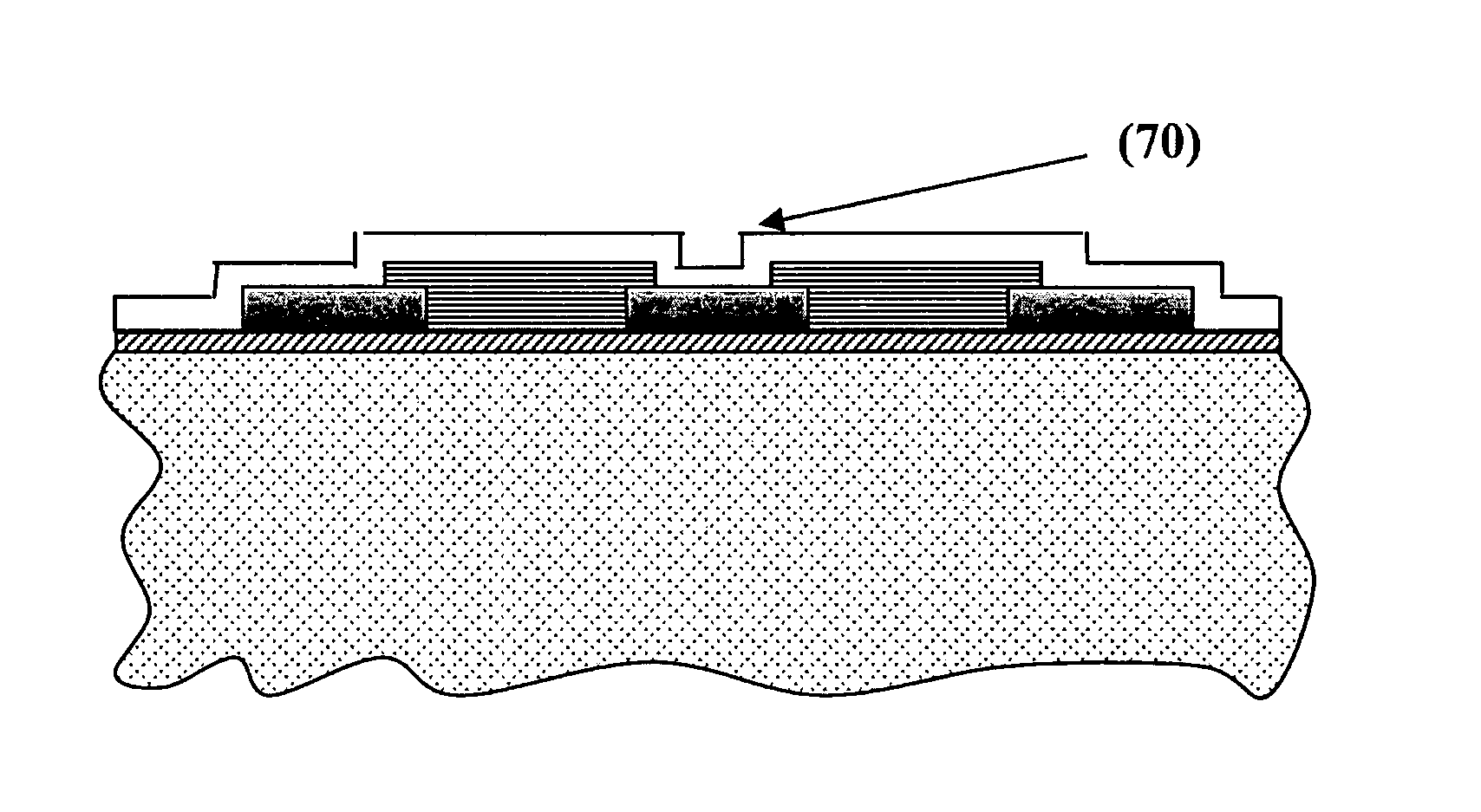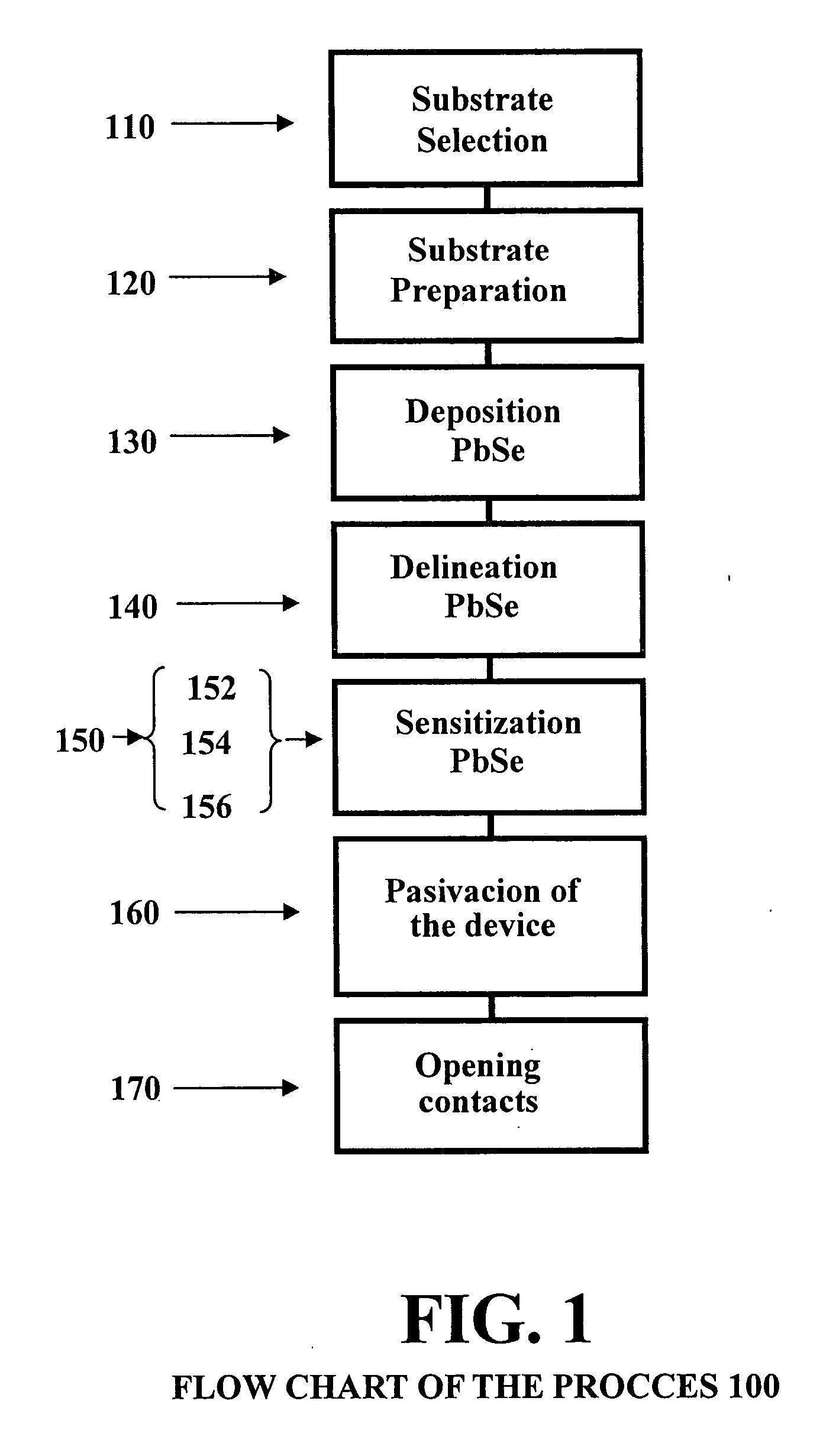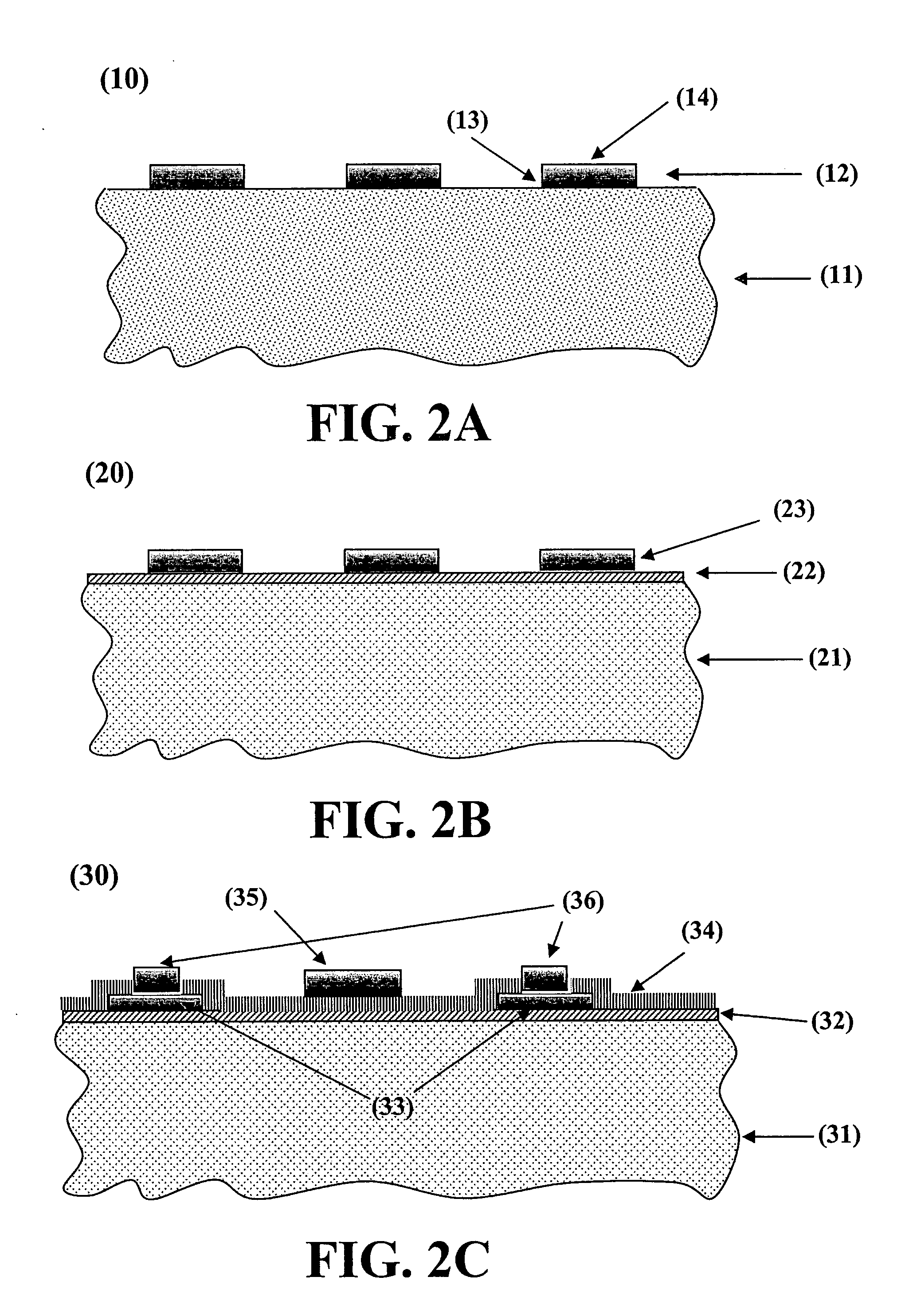Method to process polycrystalline lead selenide infrared detectors
a polycrystalline lead selenide and infrared detector technology, applied in the direction of photovoltaic energy generation, instruments, electrical equipment, etc., can solve the problems of poor yield, lack of reproducibility, and practicability of deposition methods, and achieve the effect of low cos
- Summary
- Abstract
- Description
- Claims
- Application Information
AI Technical Summary
Problems solved by technology
Method used
Image
Examples
Embodiment Construction
[0017]FIG. 1 shows a flowchart 100 illustrating one embodiment of the method to process polycrystalline lead selenide detectors. The method begins at step 110 by providing a suitable substrate, depending of the type of device to be processed. The method continues at step 120 depositing, insolating and developing a photolithographic resin, leaving free of resin those places selected for depositing PbSe. The method continues at step 130 depositing a layer of PbSe 1-1.2 μm thick by thermal evaporation in vacuum. The method continues at step 140 removing resin and PbSe (lift off), leaving the substrate with well defined detectors onto its surface. The method continues at step 150 submitting the piece (i-substrate) to a sensitizing treatment. It consists in a three folded thermal treatment: at step 152 the piece (i-substrate) is heating up to 290° C. under an atmosphere of oxygen+ iodine during two hour; after, at step 154, the i-substrate is heating up to 430° C. in air during two hours...
PUM
| Property | Measurement | Unit |
|---|---|---|
| wavelengths | aaaaa | aaaaa |
| thick | aaaaa | aaaaa |
| thick | aaaaa | aaaaa |
Abstract
Description
Claims
Application Information
 Login to View More
Login to View More - R&D
- Intellectual Property
- Life Sciences
- Materials
- Tech Scout
- Unparalleled Data Quality
- Higher Quality Content
- 60% Fewer Hallucinations
Browse by: Latest US Patents, China's latest patents, Technical Efficacy Thesaurus, Application Domain, Technology Topic, Popular Technical Reports.
© 2025 PatSnap. All rights reserved.Legal|Privacy policy|Modern Slavery Act Transparency Statement|Sitemap|About US| Contact US: help@patsnap.com



